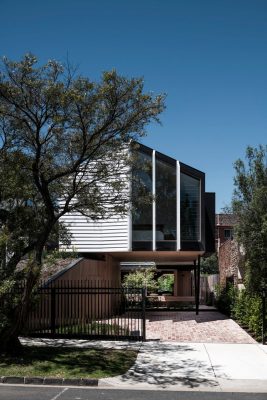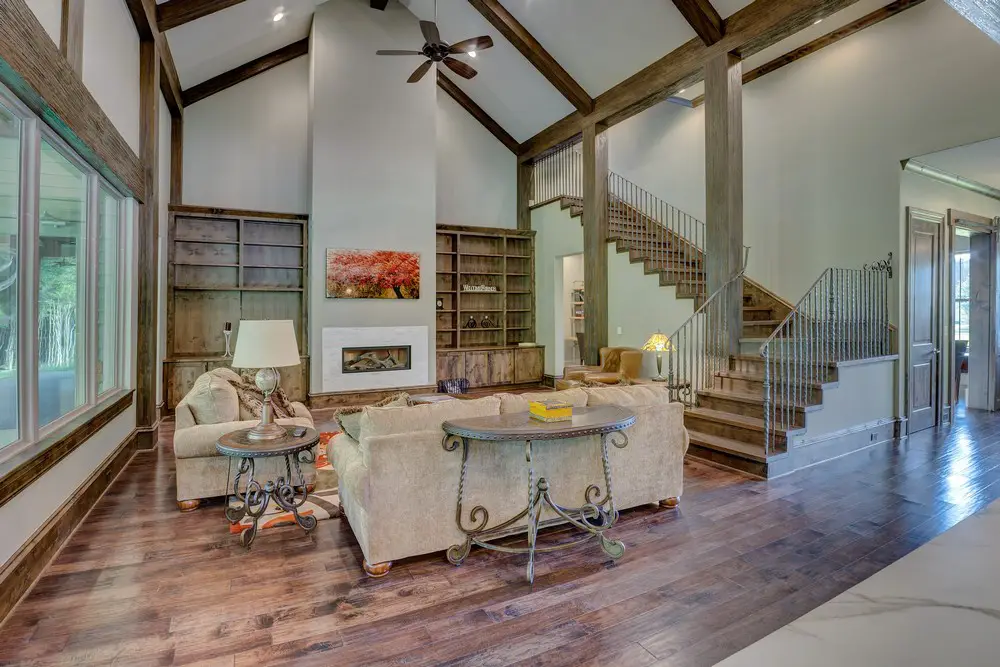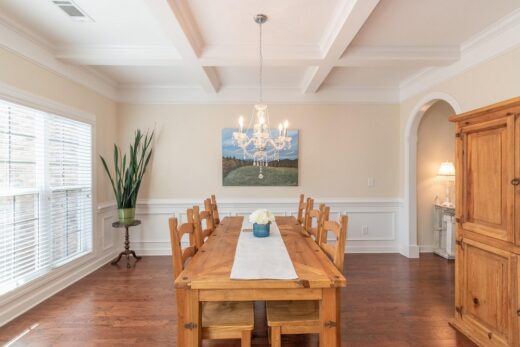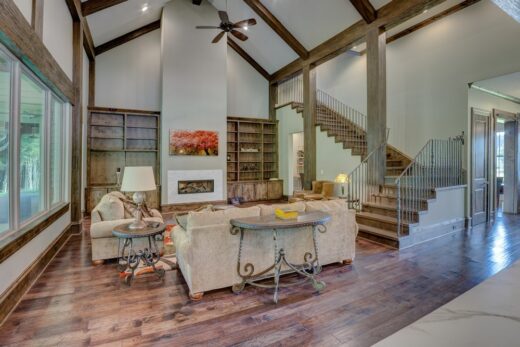How to make low ceilings look high, Home custom drapes interior design advice, Real estate improvements tips
How to make low ceilings look high help guide
11 July 2022
You will agree that there’s something distinguished about a space with high ceilings. Be it the modern chic or the grand palatial elegance, high ceilings bring unparalleled grace to a space.
Unfortunately, very few modern homes nowadays have high ceilings. After all, most of us live in matchbox-sized apartments with eight feet (or less) high walls. Then there are dwelling units housed in attics or mezzanines or basements where ceiling heights may be even lower!
As we all know, ceilings are more or less permanent once a space has been constructed. We can’t change ceiling heights on a whim. If you live in a space with low ceilings, all that you can do is create the illusion of higher ceilings.
So with this in mind, we have gathered some tried and tested tips and tricks that interior designers use in compact rooms. From long custom drapes to the placement of light fixtures, we have covered it all. But before we move on to the specific tips, let’s understand the basic principles of creating visual optics of additional height.
Make Low Ceilings Look High
What makes walls look taller and ceilings look higher
The trick is to make the viewer’s eye move up and down the wall rather than across it. This basic guideline works to trick the mind into seeing the ceiling as higher than it is in reality.
Now we come to the specific ways to trick the eye into seeing higher ceiling impressions.
Read on.
- Use full-length draperies – Determining the length ins is an important step toward making your low ceiling look higher. Doors or windows, keep the curtain poles and tracks as close to the ceiling as possible. These should definitely be much above the upper edge of the frame. Also, do not hang short-length drapes on windows. All the curtains should fall to the floor level. Curtains flowing from the top to the floor make the eye travel along their length. This makes the ceilings look higher.
- Keep the ceiling white or at least several shades lighter than the wall color – It is an optical trick that makes the ceiling look farther up than it is in reality. You can also paint a few inches of the wall top in the same color as the ceiling. That too gives an impression of additional height. Consider painting the room’s ceiling, door, windows, and walls in plain white. This brings in light and creates a uniform expanse with walls, door frames, window frames, and ceiling lines blurring into one another. This tip is especially useful for a minimalist aesthetic.
- Choose low-height furniture – The more the walls show, the higher the ceiling appears. Going by this thumb rule, your furniture – couch, chairs, coffee table, bed – in a low-ceiling room should be low-slung. The closer your furniture is to the floor, the higher the ceiling will appear. Also, choose chairs and the couch without the armrest feature. This also visually expands the space.
- Lengthen the corners – Move tall furniture pieces, high urns, and tall plants to room corners. This tricks the eye into moving upward. As we have mentioned again and again, when the eye moves up and down, the ceiling seems to feel higher than it actually is.
- Bring in vertical patterns – Wallpaper, drapes, or custom roman shades, choose vertical patterns (stripes or columns) that will give an impression of added height. Horizontal patterns make the eye move between left and right which cramps up the visual aspects to create impressions of lower ceilings.
- Use mirrors – Mirrors are a great way to expand the visual field. They reflect and bounce the light around to create an illusion of a bigger space. To give an impression of higher ceilings, make the room mirrors tall and slim. Also hang a bit higher than usual on the wall. If your floor area is spacious and low on footfalls, you can also lean the framed mirrors against the wall.
- Place your framed art cleverly – As with the mirrors, the artwork too should be vertical. These also should be hung a little bit higher than usual to create an elongated feel. You can place small pieces of art above the door and window frames to make the eye move upward towards it. This will also leave an impression of added height.
- Make the indoor plants tall – Choose your indoor plants, planters, and flower arrangements with care. Rather than wide-mouth planters and widely branching plants, pick the ones that are slim and tall. Your flower arrangements too should be rising upward rather than spreading outwards. Showcase your plants and blossoms by placing tall blooms or branches in slim vases and high urns.
- Use wall lights and floor lamps instead of ceiling lights – Lights on ceilings (tube lights or pendants) can give an impression of low height. Wall lights, table lamps, and slimline floor lamps, on the other hand, cast vertical glows that make the eye move up and down. You can also opt for see-through (glass) light fixtures to create a visual expanse that extends without breaks. If you must have chandelier lighting, keep it as close to the ceiling as possible.
- Place bright and bold rugs on the floor – This will help keep the focus on what’s on the ground. Distraction from the ceiling is another visual trick useful for low-height spaces.
We hope you found these tips & tricks helpful and can use them to give your low ceilings an optical lift!
Home Ceilings
House Ceiling Posts
How Victorian ceiling roses transform room aesthetic
Buildings
Building Design Articles
America Architecture News – latest building updates
POP-UP House, Essendon, Victoria, Australia
Architects: FIGR Architecture Studio

photo © Tom Blachford
POP-UP House, Essendon
Comments / photos for the How To Make Low Ceilings Look High advice page welcome



